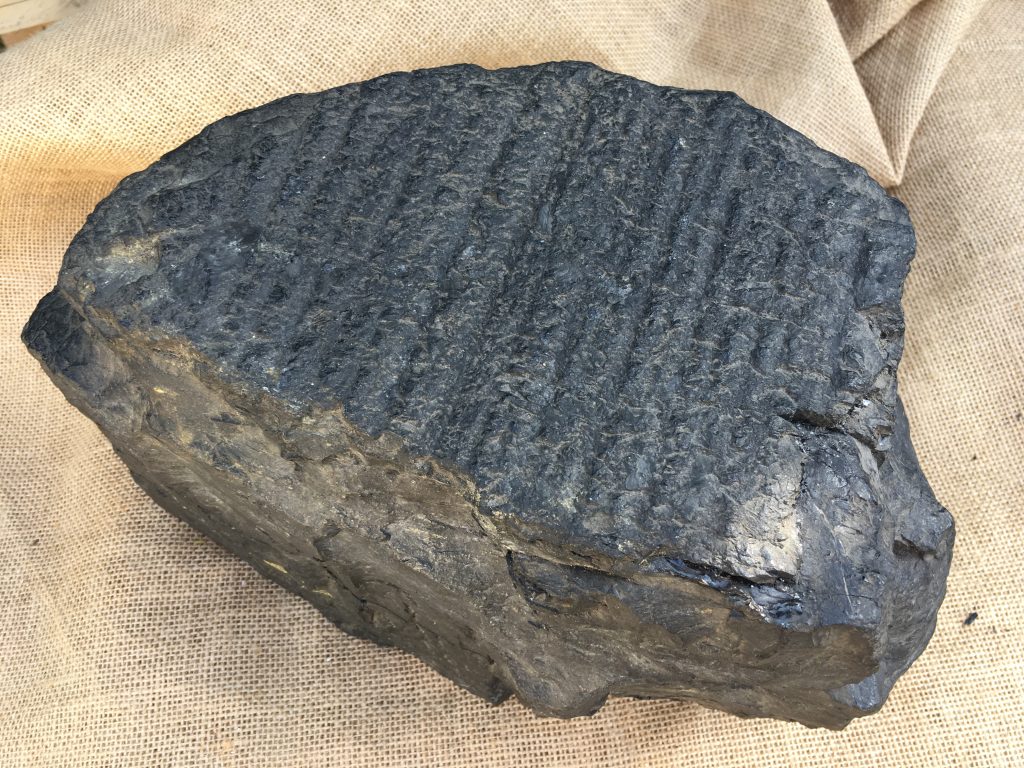
When you pick up a piece of coal you hold in your hand the compressed fossilised remnants of a primeval forest. Around 300 million years ago, a time when most of what we now call Ireland lay about 10 degrees south of the equator, giant tree-ferns and clubmosses flourished in hot, humid conditions which saw the development of extensive areas of swamp. Over time, as the plants died, their remains accumulated in the prevailing waterlogged conditions and formed thick layers of semi-rotted dead vegetation or peat. This period was characterised by fluctuations in sea level which rose and fell on numerous occasions. Each rise flooded the swamps and covered the peat layers in deposits of silt and sand. When the water level once again fell, new swamps clothed in vegetation became established and so the cycle repeated itself many times over millions of years. During the passage of time, the alternating layers of silt, sand and peat were compressed and compacted into layers of shale, sandstone and coal respectively, comparable in a sense to a gigantic, multi-layered rock sandwich. This occured in the latter stages of the geological period called the Carboniferous, meaning ‘carbon-bearing’, a reference to the extensive coal deposits which were laid down at that time..

One of the main groups of plants growing in the swamp forests were the lycopods. These were giant clubmosses, some of which attained tree-size proportions. They include a species known as lepidodendron, which could reach heights of up to 38 metres. Its ‘root’ system is known in the fossil record as stigmaria and has a readily recognisable ‘dimpled’ pattern. Another common fossil clubmoss is sigillaria. It takes around 15 cm of peat to form 1 cm of coal. The large sample I am holding was gifted to me in 1977 by a friend whose father owned a fuel depot in Harold’s Cross in Dublin. It is 20 cm in thickness and therefore represents the compressed remains of a 3-metre deposit of ancient peat and weighs 10 kg. The upper surface displays the linear pattern of the trunk of a Sigillaria. It is estimated that as much as 70% of the coal in some deposits may consist of the compacted remains of lycopods. Smaller plants also grew in those tropical forests including many species of fern and Pennsylvania in the USA is famous for them. I regularly check through my coal before consigning it to the flames and over the years have been amply rewarded with some nice fossils.



Clay-ironstone nodules are natural concretions which occur in shale and are commonly found during coal mining. They are composed of a blend of fine clay particles and an iron mineral known as siderite. Also known as ‘iron balls’, they were processed from the mid-sixteenth century onwards as a source of iron when coal extraction began in the Castlecomer area of Kilkenny. Indeed, some of the railings and gates in the locality are made of ‘Castlecomer iron’. The nineteenth-century ironworks in Arigna, Co. Roscommon, was supplied with siderite-rich nodules collected by men and women in the layers of shale exposed along the courses of the local rivers.


Clay-ironstone nodules come in a variety of shapes and sizes and over the years I have amassed a significant collection. When the Bru na Bóinne Visitor Centre in Co. Meath was being built some years ago, the machines removed vast quantities of the local shale and some large nodules surfaced. Some of these were retained and later incorporated in the water feature located just outside the main entrance to the centre. The largest specimen I have ever come across on my travels is on display outside the Natural History Museum in Bordeaux in France.
Best,
Vincent